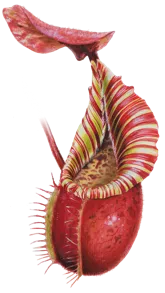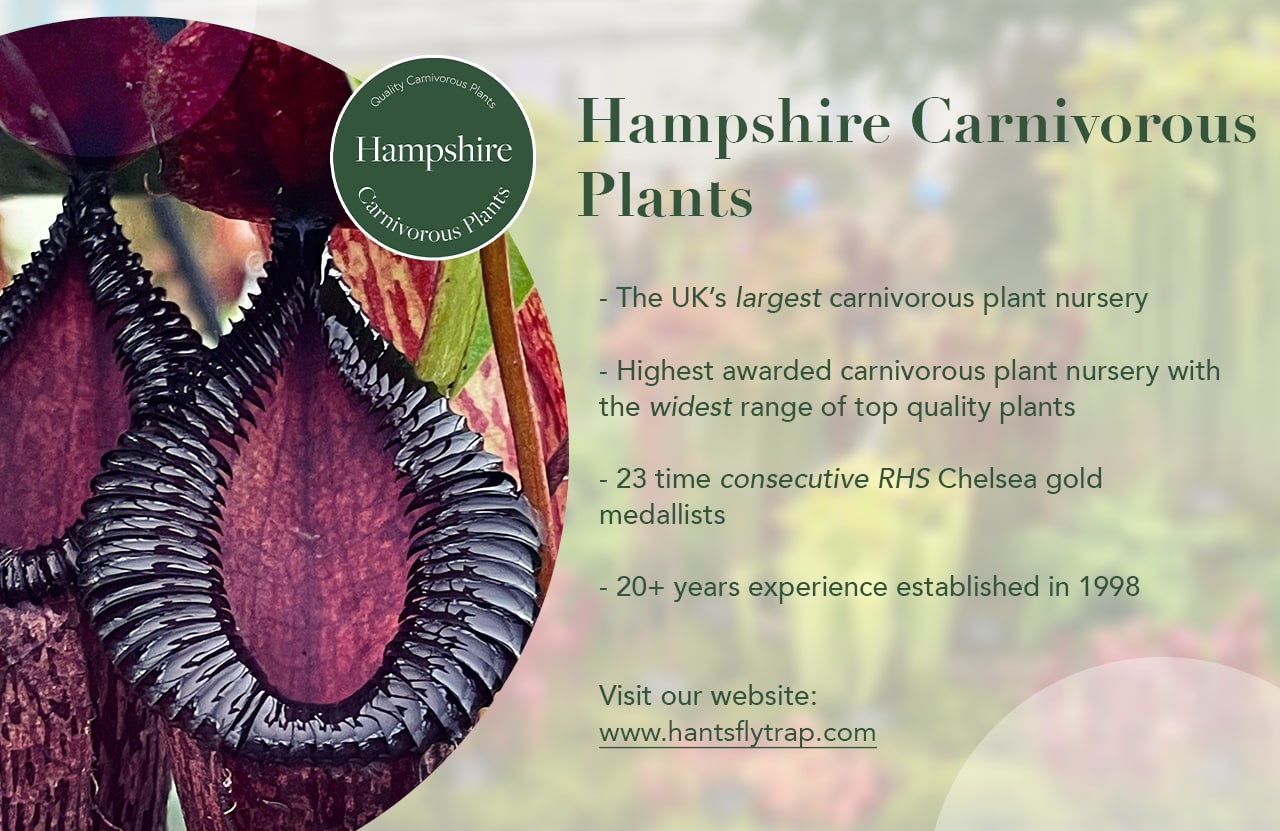Nepenthes veitchii
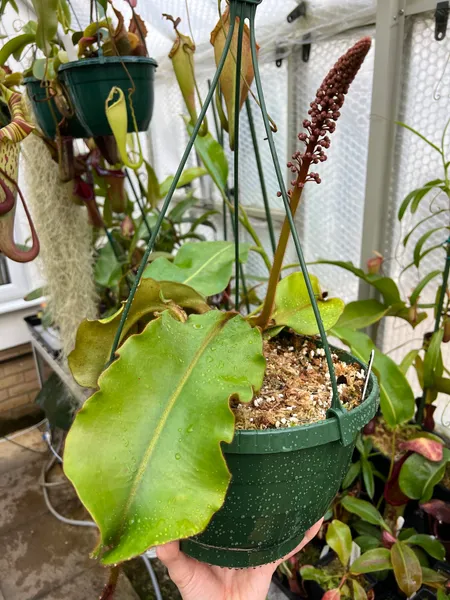 A male flower spike on one of my N. veitchii Bario
A male flower spike on one of my N. veitchii Bario 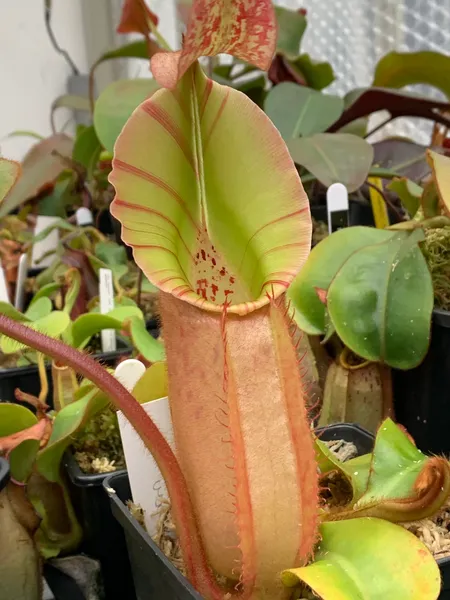 Another grex from CK, this is Murud × Candy. I was given this plant by the late Andy Smith
Another grex from CK, this is Murud × Candy. I was given this plant by the late Andy Smith 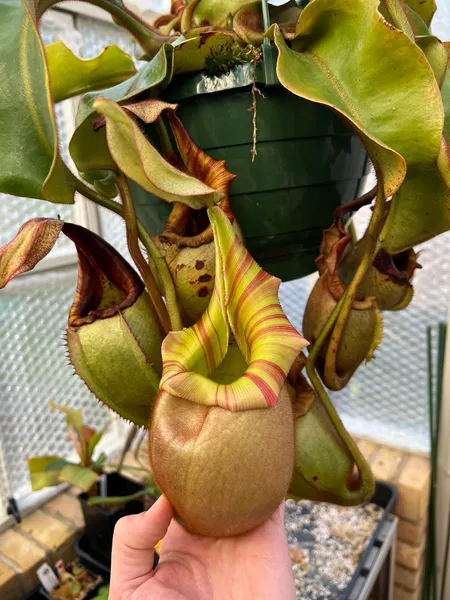 Lovely chunky pitcher on another N. veitchii, this one from BE-3646
Lovely chunky pitcher on another N. veitchii, this one from BE-3646 .DXhCS7Sq_Z1vTTSr.webp) N. veitchii Candy x Candy grex, from Chris Klein (CK)
N. veitchii Candy x Candy grex, from Chris Klein (CK) 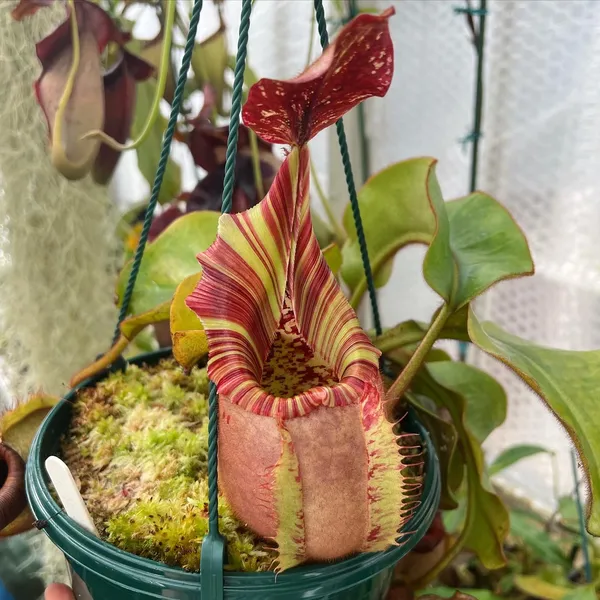 N. veitchii Candy x Yamada, also from CK - this is my current favourite along with my N. veitchii M from Exotica Plants
N. veitchii Candy x Yamada, also from CK - this is my current favourite along with my N. veitchii M from Exotica Plants 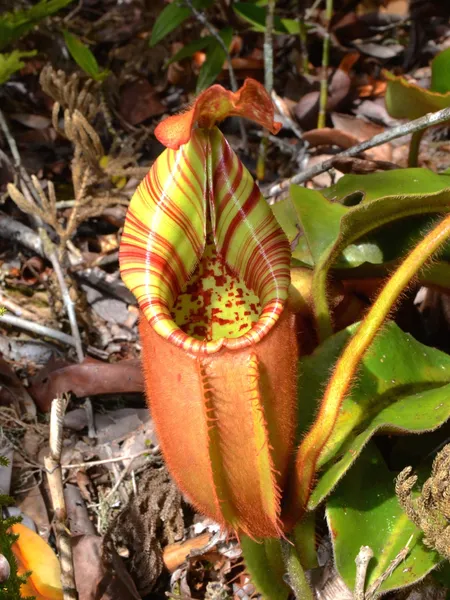 N. veitchii in Sarawak, photographed in-situ by Pavel Kirillov
N. veitchii in Sarawak, photographed in-situ by Pavel Kirillov %20covering%20all%20parts%20of%20the%20plant.CazK1HHF_Z2fa7uw.webp) Note the scrambling growth habit and indumentum (hair) covering all parts of the plant
Note the scrambling growth habit and indumentum (hair) covering all parts of the plant 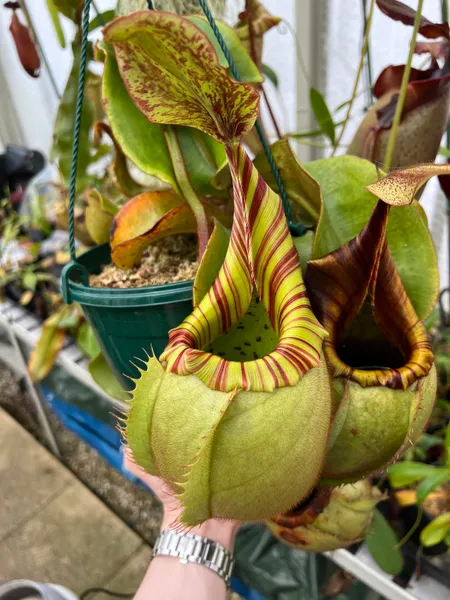 Stunning squat pitcher on my favourite plant, which I've named N. veitchii 'Supernova'
Stunning squat pitcher on my favourite plant, which I've named N. veitchii 'Supernova' 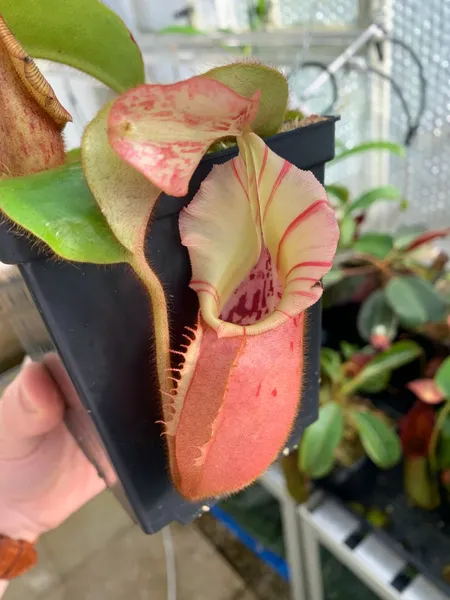 Young plant from the N. veitchii 'M' grex, from Exotica Plants in Australia
Young plant from the N. veitchii 'M' grex, from Exotica Plants in Australia Description & Care
Nepenthes veitchii is one of those species with which I could happily fill a greenhouse and not get bored, such is the variety of plants in cultivation.
The species is native to Borneo and is named after James Veitch, the famous Victorian nursery owner. N. veitchii has a very wide altitudinal distribution, as you can see in the chart below. There are lowland varieties right through to highland forms, and this makes N. veitchii a particularly adaptable grower as well as an excellent hybrid parent.
One of the great things about growing N. veitchii is the genetic diversity that’s made its way into collections around the world. While some Nepenthes species are yet to be bred in cultivation, and so all individuals come from either wild seed or tissue-cultured clones, horticultural N. veitchii seed has been created dozens of times by many different nurseries. Thankfully I too have both males and females in my collection, so can produce pure species seed! As you’ll see from the photos, I grow mainly the striped highland forms and have collected plants from Borneo Exotics, Exotica Plants, Christian Klein, and others. These typically have wide, flared, striped peristomes, while the stem, leaves, and pitchers are all covered with coarse brown hair. One of my favourite plants is a remarkably squat N. veitchii from the BE-3734 release, which I’ve nicknamed N. veitchii ‘Supernova’.
I find the key to successfully growing N. veitchii in highland conditions is to avoid the cold and damp. If you grow in a greenhouse and want your plants to last through winter, I suggest letting the potting mixture start to dry between waterings. They seem to appreciate good air circulation too, so a position near a fan or in a hanging basket may work well.
If you want to learn more, check out my detailed species showcase of Nepenthes veitchii.
How I Grow It
| Media | A coarse mix, with lots of aggregate - I use long fibre sphagnum moss, perlite, kanuma, and orchid bark (2:1:1:1) |
| Water | Keep damp but not wet. During colder weather, I let the top moss start to dry out between waterings. |
| Light | Very bright, diffused light. |
| Fertiliser | Maxsea or liquid orchid feed in the pitchers, every two weeks. |
| Temperatures | 12°C (54°F) minimum year-round, with summer highs of ~ 30°C (86°F). Definitely prefers warmer time of year. |
| Humidity | 70% during the day, rising to over 90% at night. |
Learn more about cultivation with my guide to growing Nepenthes.
Day & Night Temperatures
Nepenthes veitchii is a widely distributed species, found at elevations of between 0 and 1600 meters. This range is highlighted in orange above, and equates to temperatures of approximately 24 - 35°C during the day, and 14 - 25°C at night.
See Also
I've written profiles of the following hybrids involving Nepenthes veitchii:
Habitat
| Native to | Borneo |
| IUCN Red List status | Least Concern |
| Natural hybrids | N. albomarginata, N. chaniana, N. faizaliana, N. fusca, N. lowii, N. mollis, N. stenophylla |
Buying N. veitchii
| Availability | Widely available, but always in demand. The squat striped varieties also command a high premium. |
| Borneo Exotics codes |
|
| Recommended nursery | California Carnivores Hampshire Carnivorous Plants |
